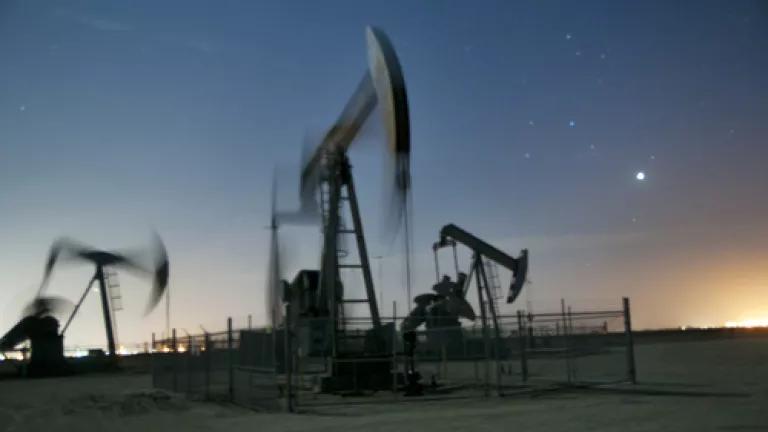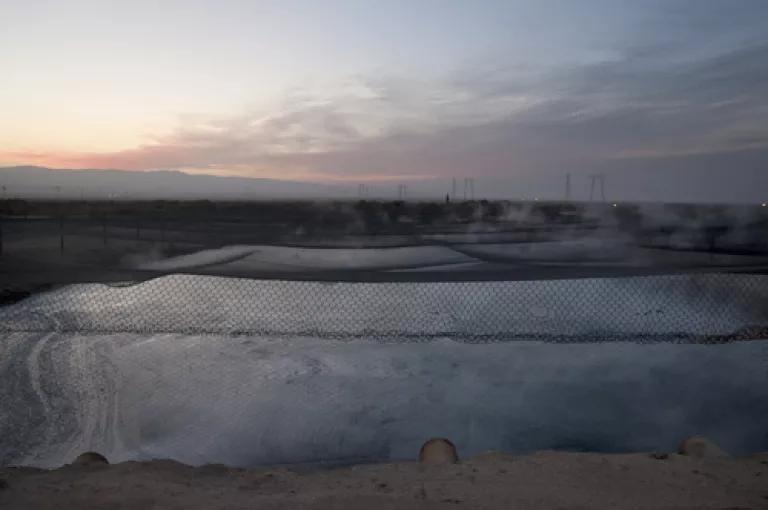
Last week, the Kern County Planning and Community Development Department took comments on a draft environmental impact report (DEIR), as required by the California Environmental Quality Act (CEQA) in order to identify impacts of future oil development in the County. The 1,876-page draft report was long but lazy, dangerously weak tea in a county--and for a community--that needs much more. The DEIR must be redone.
Kern County is the top oil producing county in California--by a long shot. It produces approximately 75 percent of California's oil and about 58 percent of its natural gas. Kern is home to 63,430 active and new oil and gas wells, and slightly more than 290,000 of Kern's residents live within one mile of one of those wells. According to a recent NRDC report, Latino/Hispanic, African American, and Asian communities are disproportionately burdened by environmental pollution in California, many of whom live in Kern County. Kern's residents deserve protection from the looming mountain of possible risks related to oil and gas production, including fracking. The DEIR fails to do the job.
Walt and Marilee Desatoff were driven out of their family home in Kern County, after Vintage Petroleum moved into the neighborhood. Their story is a warning for the rest of the County.
The DEIR purports to identify all of the environmental impacts from exploring for and producing oil in Kern County for the next 25 years and seeks, therefore, to shield future oil and gas activity from any further CEQA review. That is an impossible task and pernicious undertaking.
To pretend we can say today that there will be no significant impact from activities that are to occur 25 years from now is disingenuous and directly thwarts CEQA. CEQA demands a level of review that will inform the public about environmental effects of proposed activities, identify the ways that environmental damage can be avoided or reduced, and prevent damage to the environment by requiring changes in projects through the use of alternatives or mitigation measures. Future oil wells in Kern County require site-specific CEQA review.
In our comment letter, we highlight the DEIR's specific failures to guard public health against air emissions, water impacts, and hazardous materials. Kern County is part of the San Joaquin Valley, and the air basin is already in extreme nonattainment for ozone. The DEIR includes plans for 2,697 new producing wells each year for 25 years, or a total of 67,425 more wells. The DEIR shows huge, negative air quality effects from these wells, offers a short list of highly questionable mitigation measures, and then magically concludes that impacts on air, other than odors, from 67,425 new wells will not be significant. This conclusion is unsupported. It relies on offsets which may or may not exist and a few meager limits on equipment. There is no showing that this feeble list of mitigation will work the wonders the DEIR claims.

The DEIR fails to consider the impact on future increased water demand and wastewater management needs that are sure to flow from more fracking. The DEIR concludes, without support, that spills won't be a problem. But a 2015 report prepared for NRDC by the UCLA Institute of the Environment and Sustainability found that spills remain likely and that the number of spills in Kern County has only decreased when the total amount of oil and gas production went down. The DEIR fails to protect our water and health from drilling fluids. The DEIR ignores the recent statewide study of hydraulic fracturing and its recommendations. For example, in contravention of those recommendations, it fails to address the dangerous use of sump pits and earthen ponds. Dumping our fracking wastewater in earthen, unlined ponds is a sure way to contaminate our groundwater. Similarly, the DEIR ignores the health threats from chemicals used during fracking and includes no restrictions to protect public health or the environment.
The current DEIR doesn't prevent harm, it greenlights it.
Photo credits: Sarah Craig/NRDC

